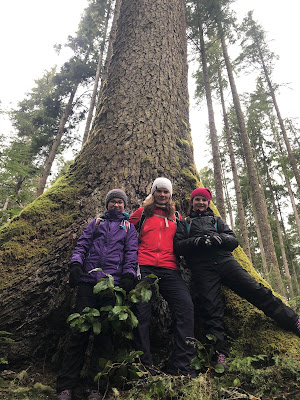“The key to bringing the environmental impact of architecture in line with planetary limits is to dramatically improve the energy efficiency of existing buildings while radically reducing new construction. In other words: less demolition, more refurbishment.”
Jeff Olson will discuss the effects of farmland drainage on our environment in a 1:30 pm, Mar. 30, webinar hosted by the School of the Environment and Sustainability Students’ Association.
Upcoming Events
Learn about research directions and a grassroots movement that led to a reduction in the amount of lead exposure in wildlife during the WildEcol Seminar at 3:30 pm, Apr. 2.
Saskatoon Nature Society is planning a bluebird trip on April 3 and a crocus trip on Apr. 14. Field trips are currently for members only, so sign up now. Advance registration is required.
Learn how to use a compass for orienteering in a free online webinar from 7-8 pm, Apr. 6.
There will be an online discussion on plastic pollution and the efforts globally, nationally, and locally to identify solutions at 7 pm, Apr. 6, as part of the Sustainability Speaker Series.
There will be a discussion on the Saturn power story and its Highfield solar project at the virtual breakfast meeting of the Energy Management Task Force on Apr. 7.
Global Water Futures is offering an online lecture series on women and water with a presentation at 12:30 pm, Apr. 8, on women in the field.
Saskatoon Nature Society’s Golden Eagles are planning a bluebird trip on Apr. 8 and a crocus trip on Apr. 15. Retirees and partners who are interested in birds and the natural world are invited to participate.
Local News
SOS Trees Coalition Saskatoon (trees@sostrees.ca) is looking for interesting true tree stories that will be shared in the organization’s newsletter right before Arbor Day.
Join Stan Shadick, Saskatoon, for a socially distanced private birding tour or online/outdoor workshops (Signs of Spring, Sounds of the Night, Dancing Grouse). Proceeds will support Living Sky Wildlife Rehabilitation.
A petition calls for an environmental assessment for agricultural drainage networks in Saskatchewan.
“Nature, declares Richard Mabey, makes us ill. . . . ‘Bacteria and viruses and man-eating tigers and predatory Asian hornets are also all part of nature.’ . . . The most respectful terms of engagement, he argues, are not ‘anthropomorphism or manufactured empathy’ but ‘a sense of neighbourliness’. This is not friendship but ‘based on sharing a place, on the common experience of home and habitat and season’. ‘It might provide a bridge across the great conceptual divide between us and other species.’”
“We abuse land because we regard it as a commodity belonging to us. When we see land as a community to which we belong, we may begin to use it with love and respect.”
From Information to Action
Irrigation canals covered with solar panels are a powerful combination.
“The quest for net zero health-care emissions involves re-imagining a society where health and wellbeing are prioritised, and incentives are aligned to promote fiscal and environmental stewardship. . . . Mitigating the health-care footprint requires interventions both to the health-care system and to the factors driving demand.”
“In the last five years, while acceptance of climate change has gone more mainstream, the 60 largest commercial and private investment banks in the world financed the fossil fuel industry to a tune of nearly $4 trillion.”
EcoFriendly Sask supports Saskatchewan environmental initiatives through an online publication, an events calendar, small grants, and the Nature Companion website/app. You can follow EcoFriendly Sask by liking us on Facebook, following us on Twitter, or by email (top right corner).
Did you know? Each adult female Richardson’s Ground Squirrel has her own tunnel where she raises her litter without help from the male.




























